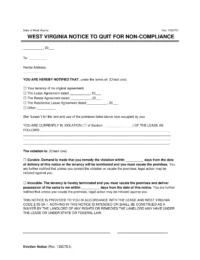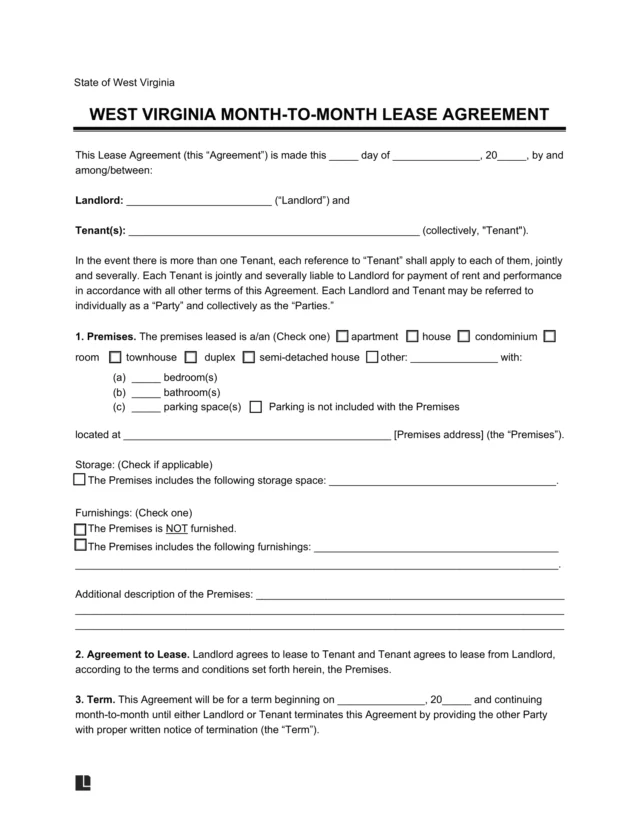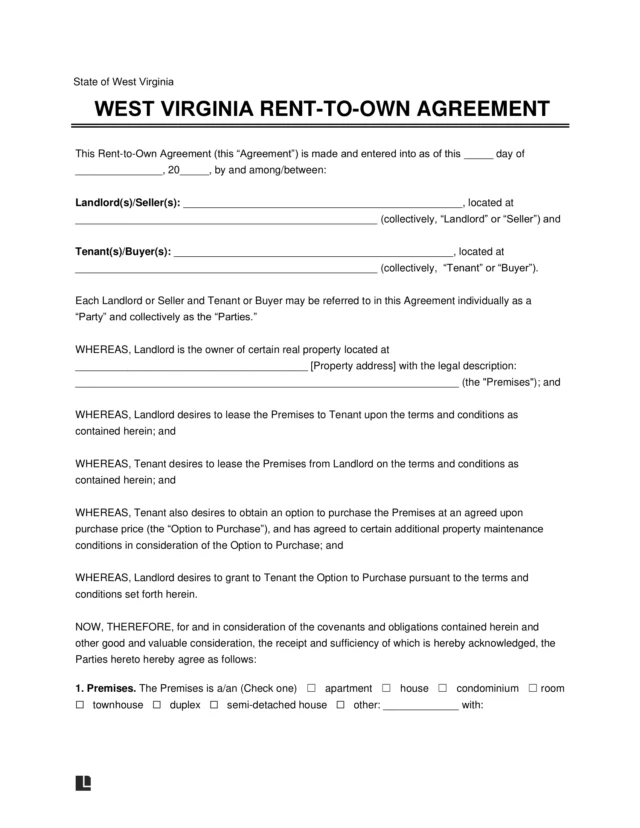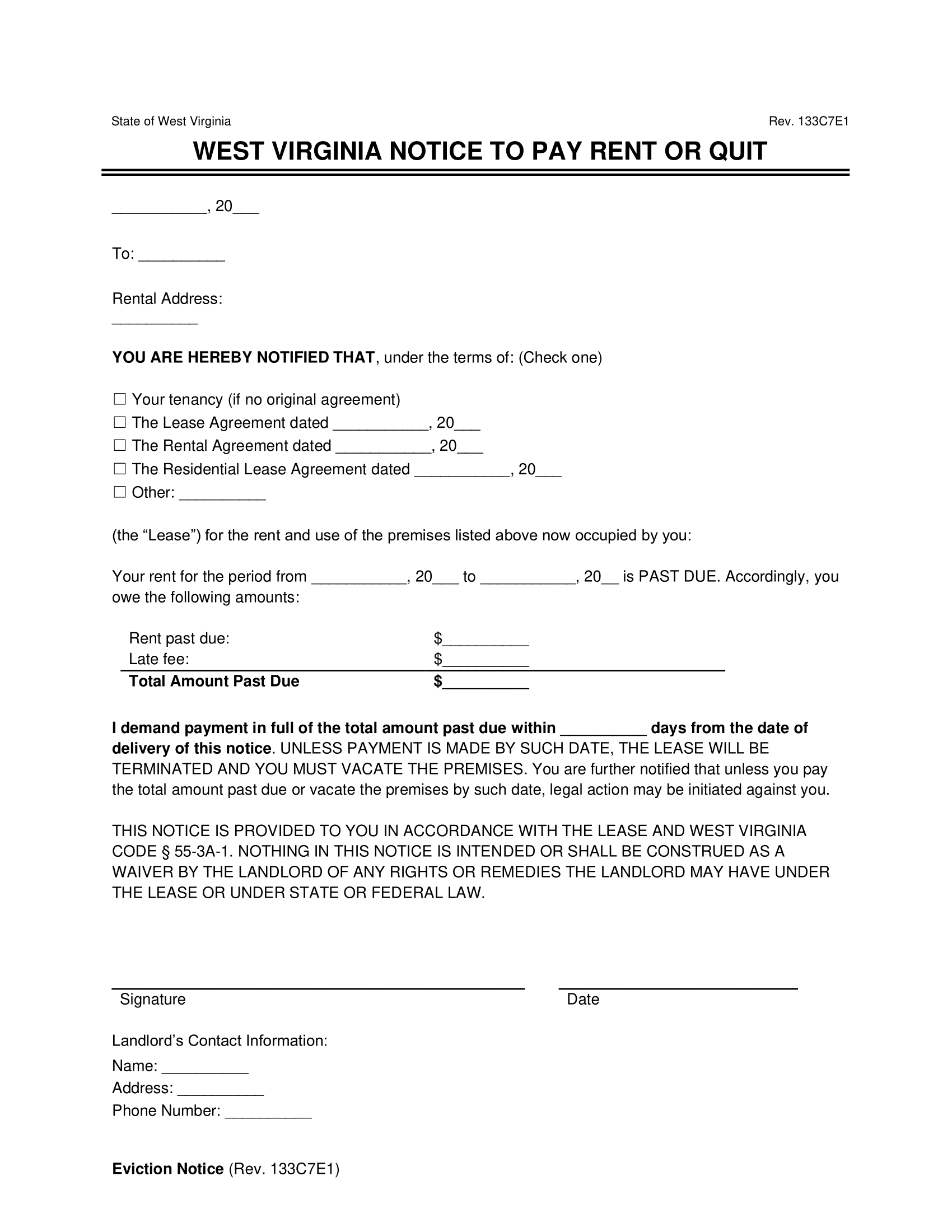Understanding Eviction Notices in West Virginia
Before taking a tenant to court, West Virginia landlords must deliver a written eviction notice suited to the situation. The notice requirements vary depending on whether the reason is for non-payment, lease violations, or lease termination.
Use our document editor to make a compliant West Virginia eviction notice fast. Download the final version as a PDF or Word file.
Types of Eviction Notices in West Virginia
West Virginia permits eviction notices tailored to the situation, such as unpaid rent or damage to the premises, with timelines determined by state law.
Immediate Notice to Pay Rent or Quit
Use this notice to demand that tenants pay their overdue rent or leave the property. In West Virginia, a landlord can dictate the period a tenant has to pay or ask for an immediate resolution.
The notice should include a clause stating the tenant has five days to submit a defense to the petition per WV Code § 55-3A-1. It should also include the name of the owner who has the right to repossess the rental property, a property description, and the amount of rent that’s overdue.
Immediate Notice to Pay Rent or Quit
Evict a tenant if they haven’t paid rent on time.
Immediate Notice to Quit for Non-Compliance
Unlike most states, West Virginia doesn’t require landlords to give tenants a notice period for non-compliance. Alternatively, a landlord can proceed with the eviction process as soon as they find out about the offense. Most landlords will still issue a notice to quit, though, as it’s a courteous act toward the tenant and can save both parties time and resources.
Immediate Notice to Quit for Non-Compliance
Serve the tenant this notice before the eviction process can proceed in court.
30-Day Notice Lease Termination
This notice lets you communicate your plans to terminate a month-to-month lease. It provides the minimum 30 days’ notice required by state law (WV Code § 37-6-5).
30-Day Notice Lease Termination
Give tenants 30 days’ notice to move out if they’re on a month-to-month lease.
How to Evict a Tenant in West Virginia
In West Virginia, eviction is governed by § 55-3, § 55-3A, and § 55-4 of the West Virginia Code.
Step 1 – Send an Eviction Notice
Inform the tenant you plan to evict them by giving them notice. Ensure the notice states the eviction reason and how long they have to fix the issue. Depending on the reason, you can decide not to let them cure the breach.
Step 2 – File for Eviction
Because the landlord isn’t required to provide notice, they can proceed directly to the local Magistrate Court to sue for eviction. This is also known as “Unlawful Occupation” or “Wrongful Occupation,” and the court will schedule a hearing no more than ten days from the filing date.
Step 3 – Serve the Tenant
Recruit the assistance of an adult who isn’t involved in the case to issue the summons and complaint to the tenant.
Step 4 – Attend the Court Hearing
Appear at court and prepare to present evidence at the hearing. If a tenant doesn’t respond to a petition or show up at the hearing, the court will deem the landlord as the case’s winner.
Step 5 – Get a Writ of Possession
If the court declares the landlord as the winner or the tenant fails to respond or appear in court, the court will set a vacate date for the tenant. If the tenant still doesn’t move out, the landlord may acquire a Writ of Possession from the court, which allows a police officer to help remove the tenant and their possessions from the property.
Related Court Forms
- Petition for Summary Relief: If a tenant has violated the terms of their lease, a landlord may file this petition to initiate an eviction.
- Answer Form: The tenant uses this form in response to a court summons. It allows them to deny or admit to the landlord’s allegations.
- Writ of Possession: If the landlord has been to court and succeeded in suing for eviction, but the tenant won’t leave, a writ of possession allows the tenant to involve the police department. A police officer may then remove the tenant and their possessions.








